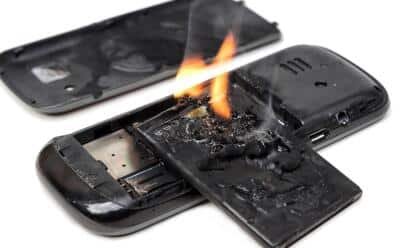Why Does Capacity of Your Lithium Batteries Drops?
Lithium-ion batteries are the fastest growing secondary batteries after nickel-cadmium and nickel-hydrogen batteries. Its high-energy properties make its future look bright. However, lithium-ion batteries are not perfect, and their biggest problem is the stability of their charge and discharge cycles. This paper summarizes and analyzes the possible causes of the attenuation of the capacity of lithium-ion batteries, including overcharging, electrolyte decomposition and self-discharge.
Lithium-ion batteries have different embedding energies when the embedding reaction occurs between the two electrodes, and in order to obtain the best performance of the battery, the capacity ratio of the two host electrodes should maintain a balanced value.
Generally speaking, a smaller mass ratio leads to incomplete utilization of the negative electrode material; a larger mass ratio may cause safety risks due to the negative electrode being overcharged. In short, at the optimized mass ratio, the battery performance is the best.
For an ideal Li-ion battery system, the content balance does not change during its cycle, and the initial capacity in each cycle is a certain value, but the actual situation is much more complicated. Any side reaction that can produce or consume lithium ions or electrons may lead to a change in the battery capacity balance. Once the battery capacity balance state changes, this change is irreversible and can be accumulated through multiple cycles, which has a serious impact on battery performance. In lithium-ion batteries, in addition to the redox reaction that occurs when lithium ions are de-embedded, there are also a large number of side reactions, such as electrolyte decomposition, dissolution of active substances, and lithium metal deposition.
OVER CHARGING
- Overcharge reaction of graphite negative electrode:
When the battery is overcharged, lithium ions are easily reduced and deposited on the negative electrode surface.
Li++e–=Li(s)
The deposited lithium is coated on the surface of the negative electrode, blocking the embedding of lithium. The reasons for the decrease in discharge efficiency and loss of capacity are:
①the amount of recyclable lithium is reduced;
②The deposited lithium metal reacts with a solvent or supporting electrolyte to form Li2CO3, LiF or other products;
③Lithium metal is usually formed between the negative electrode and the diaphragm, which may block the pores of the diaphragm and increase the internal resistance of the battery. ;
④Due to the lively nature of lithium, it is easy to react with the electrolyte and consume the electrolyte. This leads to reduced discharge efficiency and loss of capacity.
Fast charging, the current density is too large, the negative electrode is severely polarized, and the deposition of lithium will be more obvious. This situation is prone to occur when the positive electrode active substance is in excess relative to the negative electrode active substance. However, in the case of high charging rates, even if the proportion of positive and negative active substances is normal, the deposition of lithium metal may occur.
- Positive electrode overcharge reaction
When the ratio of the positive electrode active substance to the negative electrode active substance is too low, the positive electrode overcharge is prone to occur.
The capacity loss caused by overcharging of the positive electrode is mainly due to the production of electrochemical inert substances (such as Co3O4, Mn2O3, etc. ), which destroys the capacity balance between the electrodes, and the capacity loss is irreversible.
- Oxidation reaction of electrolyte when overcharged
When the pressure is higher than 4. 5V, the electrolyte will oxidize to produce insolubles (such as Li2CO3) and gases. These insolubles will clog the micropores of the electrode and hinder the migration of lithium ions, causing capacity loss during the cycle.
The oxidation of any solvent will increase the concentration of the electrolyte, decrease the stability of the electrolyte, and ultimately affect the capacity of the battery. Assuming that a small part of the electrolyte is consumed each time it is charged, more electrolyte is required when the battery is assembled. For a constant container, this means loading a smaller amount of active substance, which will cause a decrease in the initial capacity. In addition, if a solid product is produced, a passivation film will be formed on the electrode surface, which will cause the polarization of the battery to increase and reduce the output voltage of the battery.
ELECTROLYTE DECOMPOSITION
Electrolytes include electrolytes, solvents and additives, and their properties will affect the service life, specific capacity, magnification charge and discharge performance, and safety performance of the battery. The decomposition of electrolytes and solvents in the electrolyte will cause loss of battery capacity. During the first charge and discharge, the SEI film generated by solvents and other substances on the surface of the negative electrode will form irreversible capacity loss, but this is an inevitable situation.
If there are impurities such as water or hydrogen fluoride in the electrolyte, the electrolyte LiPF6 may decompose at a higher temperature, and the resulting product reacts with the cathode material, causing the battery capacity to be affected. At the same time, some products will react with solvents and affect the stability of the SEI film on the negative electrode surface, which will cause the performance of lithium-ion batteries to deteriorate. In addition, if the product of the decomposition of the electrolyte is not compatible with the electrolyte, the positive electrode pores will be blocked during the migration process, resulting in attenuation of the battery capacity.
SELF DISCHARGE
Under normal circumstances, lithium-ion batteries will experience capacity loss. This process is called self-discharge and is divided into reversible capacity loss and irreversible capacity loss. The solvent oxidation rate has a direct impact on the self-discharge rate. The positive and negative active materials may react with the solute during charging, resulting in lithium ion migration, capacity imbalance and irreversible attenuation. Therefore, it can be seen that reducing the surface area of the active material can reduce the capacity loss rate, and the decomposition of the solvent will affect the battery storage life. In addition, diaphragm leakage can also lead to capacity loss, but this possibility is low. If the self-discharge phenomenon persists for a long time, it will lead to the deposition of lithium metal and further lead to attenuation changes in the capacity of the positive and negative electrodes.
ELECTRODE INSTABILITY
During the charging process, the active material of the positive electrode of the battery is unstable, which will cause it to react with the electrolyte and affect the battery capacity. Among them, the structural defects of the cathode material, the high charging potential, and the carbon black content are the main factors affecting the battery capacity.
Prev Article: E-rickshaw Lithium Battery
Next Article: Lithium Battery for Caravan



Leave A Comment